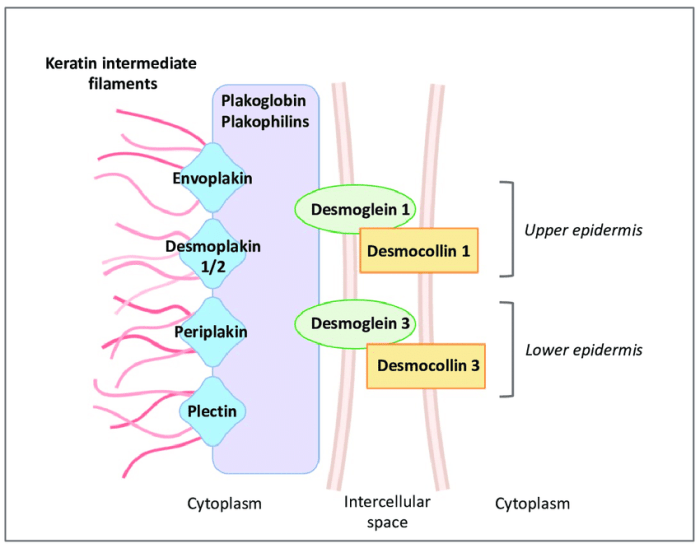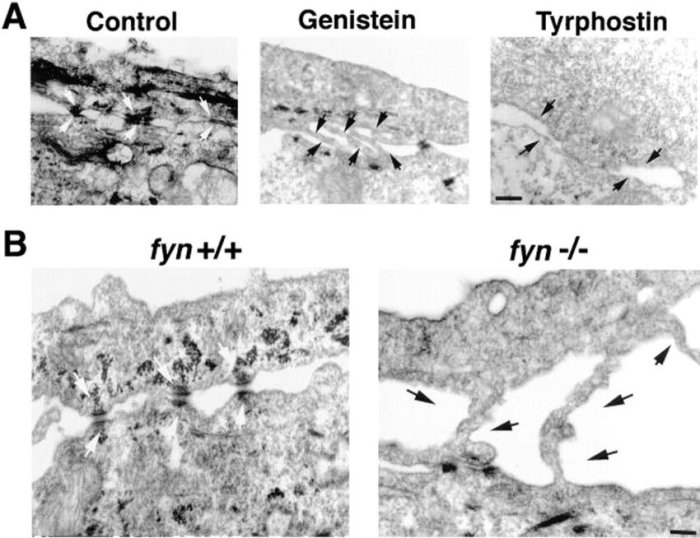Live keratinocytes connected by desmosomes produce pre keratin – Live keratinocytes connected by desmosomes produce prekeratin, a crucial protein that undergoes keratinization to form the protective layer of our skin. This process plays a vital role in maintaining skin health and integrity, and disruptions can lead to various skin disorders.
In this comprehensive guide, we delve into the structure and function of keratinocytes, the process of prekeratin production, its clinical significance, and current research directions in keratinocyte biology.
Keratinocyte Structure and Function: Live Keratinocytes Connected By Desmosomes Produce Pre Keratin

Keratinocytes are the primary cells of the epidermis, the outermost layer of the skin. They are responsible for producing keratin, a tough protein that protects the skin from damage. Keratinocytes are connected to each other by desmosomes, which are specialized cell junctions that provide strong adhesion.The
process of keratinization involves the differentiation of keratinocytes from basal cells to mature keratinocytes. As keratinocytes move towards the surface of the skin, they accumulate keratin and other proteins, which form a protective layer that prevents water loss and protects the skin from damage.
Prekeratin Production
Prekeratin is a precursor protein that is synthesized in the cytoplasm of keratinocytes. It is composed of two polypeptide chains that are coiled together to form a helix. Prekeratin filaments are assembled into bundles that are then transported to the cell membrane and secreted into the extracellular space.The
synthesis and assembly of prekeratin filaments are regulated by a number of factors, including hormones, growth factors, and cytokines. Prekeratin production is increased in response to injury or stress, which helps to repair and protect the skin.
Clinical Significance
Prekeratin is a valuable marker for the diagnosis and treatment of skin disorders. Mutations in prekeratin genes can lead to a number of skin diseases, such as psoriasis and ichthyosis. Prekeratin markers can also be used to identify and classify skin tumors.There
is increasing interest in the development of therapeutic strategies that target prekeratin production. These strategies could be used to treat a variety of skin disorders, including psoriasis, ichthyosis, and skin cancer.
Research Methods, Live keratinocytes connected by desmosomes produce pre keratin
A variety of experimental models are used to study keratinocytes and prekeratin production. These models include cell culture systems, animal models, and human skin biopsies.Techniques for isolating and analyzing prekeratin include immunohistochemistry, Western blotting, and mass spectrometry. These techniques allow researchers to study the expression, localization, and function of prekeratin in different cell types and tissues.Current
research directions in keratinocyte biology include the study of prekeratin regulation, the role of prekeratin in skin diseases, and the development of new therapeutic strategies for skin disorders.
User Queries
What is the role of desmosomes in keratinocyte adhesion?
Desmosomes are cell-cell adhesion structures that connect keratinocytes, forming a strong network that maintains the integrity of the skin.
How is prekeratin produced?
Prekeratin is synthesized in the cytoplasm of keratinocytes as individual filaments, which then assemble into intermediate filaments.
What is the clinical significance of prekeratin?
Prekeratin plays a crucial role in skin disorders such as psoriasis and ichthyosis, and its expression can be used as a marker in dermatopathology.

